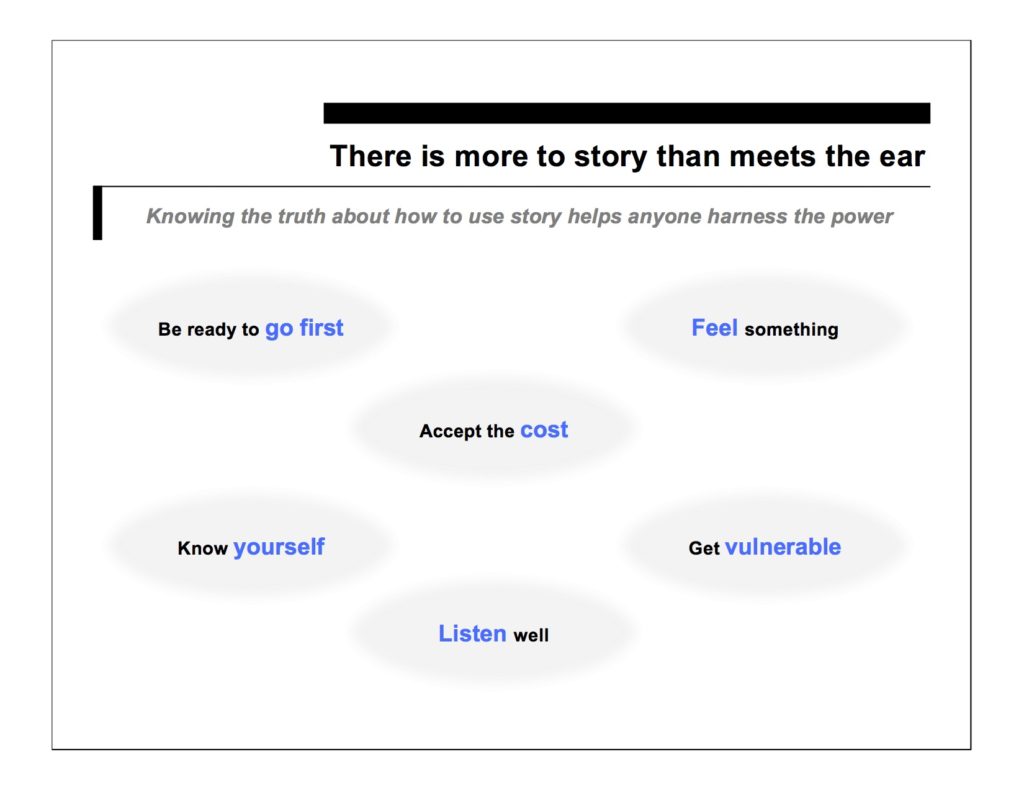I went looking for the truth about story.
I began a learning journey about story as part of the Georgetown Transformational Leadership program. My final project focused on: what is so powerful about story and how it brings people together.
Along the way I held workshops with colleagues, interns and friends. I spoke at an event designed to foster connection. I reflected on previous work to build psychological safety in teams. I wrote about story here and here.
Going in, I knew there was something special about story. As I went through the project, I confirmed that story connects people and can be harnessed by anyone. I also uncovered the other truths about story.
Story starts with knowing yourself.
Moving beyond the territory of anecdote requires searching and reflection. Knowing yourself is how you ascribe meaning to events and build a narrative (granted, it’s your narrative) about the journey you are on. This is hard work and is something many of us don’t deliberately devote time to.
Stories help us learn about each other.
They put into words something that may have been felt or hinted at through behavior. The learning comes from combining the what of the story with the meaning-making from the teller, the why. I held a workshop with a group of close friends who have known each other for over 10 years. The group already knew much of the what, but learning the why and the impact events had on the speaker was new. The full story can only be experienced through the telling.
Story makes us feel something.
Humans have all experienced otherness, fear, loss, joy, and love. We know these feelings. When you hear a real story, it sparks a thought of ‘how do I relate to this’. Listeners start to compare, ‘when did I feel like that, what is similar or different from my experience?’. Recognizing that you are the same as the teller on a foundational level helps you understand them and empathize.
Going first opens a door for others to share.
It can feel risky to tell your story in public. After all, it will forever be ascribed to you after that moment (especially if you put it on the internet). But the reality is someone has to go first to blaze the trail. In a team, you may have to establish permission. To create the environment that enables real story, you have to make it safe and demonstrate what real sharing looks like. The same is true in 1:1 interaction – someone has to be willing to go first!
Connecting comes at a cost.
The cost of admission is vulnerability from the teller, attention and appreciation from the listener, and emotional energy from both. Every workshop I’ve led ends with the group feeling drained. It takes effort to go beyond surface-level interactions, you need to bring parts of yourself that don’t often get used at work. It can feel like working out a rarely-used muscle.
Listening is as important as telling.
Listening without judgment is key. It is hard to just listen with curiosity and not get sucked into thinking about how the story relates to you and your own experiences (see point 3). Giving your full, undivided attention to someone, without interruption, honors their story. It is a great way to show appreciation.
I’m grateful for the opportunity to explore story and share what I have learned. As I look to the future, I’m excited to keep pushing on story and use this project to shape what I tackle next!


